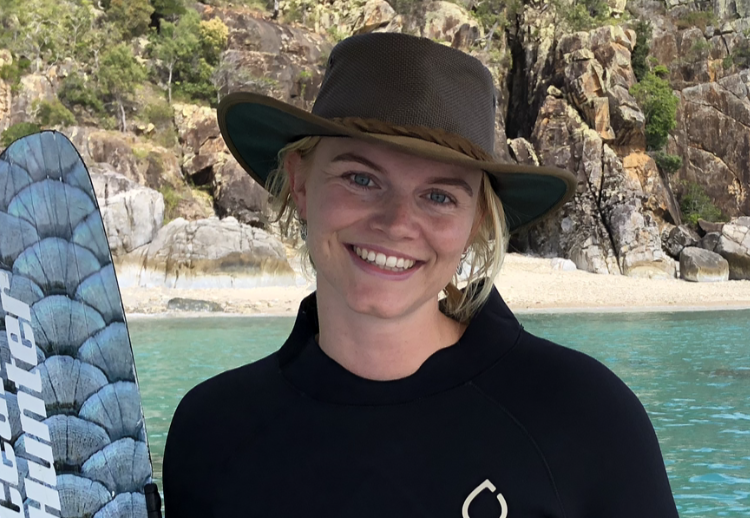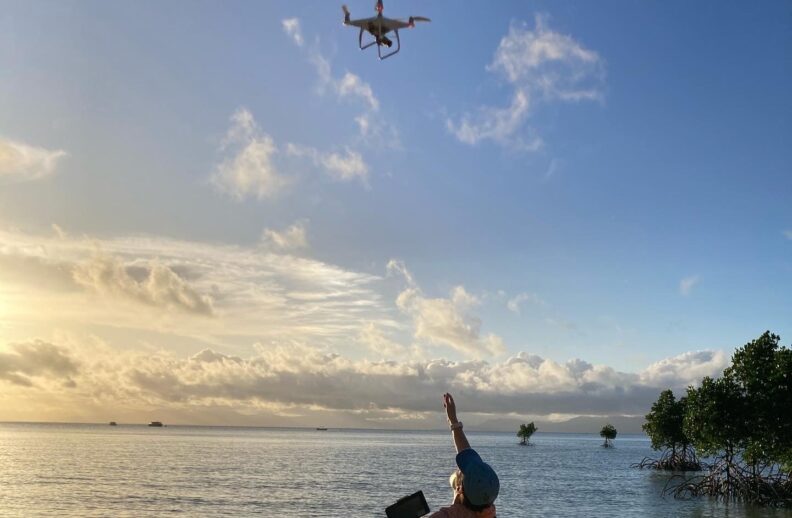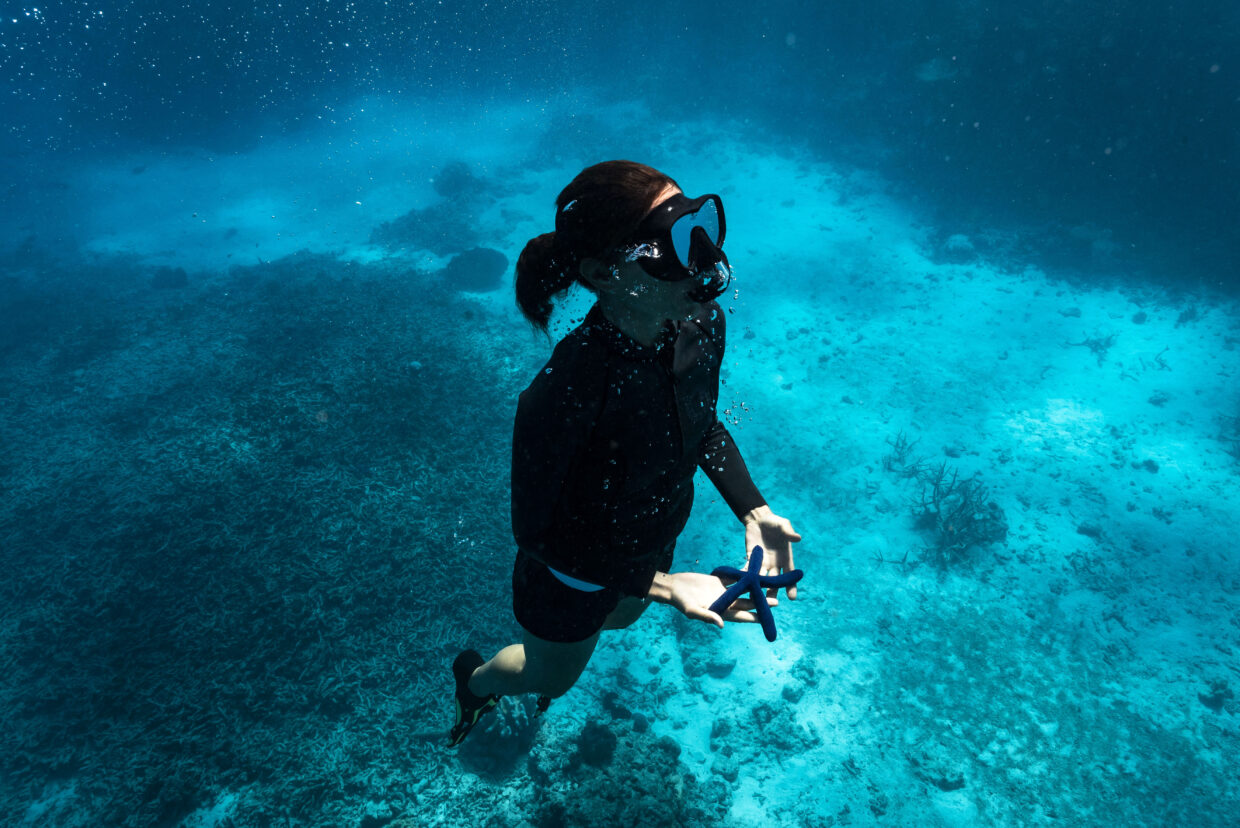If there’s one place in the world that’s perfectly placed for researching the Great Barrier Reef, it’s Orpheus Island.
We meet some of the PhD students from James Cook University’s Orpheus Island Research Station (OIRS) to find out more about their research projects and how they’re helping to protect the future of our iconic reef and its inhabitants with support from Morris Family Foundation.

Sasha Faul
Growing up as an adventurous and outdoorsy child, I was always fascinated with wildlife and ecology. When I learned to scuba dive as an early teen, I became passionate about the ocean and developed an interest in sharks.
I started out as a volunteer for a shark research team, and as I gained experience and learned more, I realised I had too many unanswered questions about the movement patterns of the sharks we were working on. My volunteer supervisor, who is now my research supervisor, guided me in designing my study to answer some of these questions.
Apex shark populations are declining globally, so understanding their habitat use and movement can help us manage their populations, as well as guide efforts to minimize negative human and shark interactions.
My research aims to answer some big questions about habitat use for juvenile shark pups. Specifically, I’m trying to define where shark pups live during the early years of their lives, and if these habitats are different to the ones used by adults.
Some shark species use ‘nursery habitats’, or areas where small juvenile sharks can access food and shelter and have a safe haven to grow and mature. My research focusses on trying to find these shark ‘nurseries’ for two species: the tiger shark and the great hammerhead shark.
I’m using a method called acoustic tracking, where we implant a tracking tag into the sharks. It allows us to track their movements to find out which areas they are using. By comparing the movements of adults and juvenile sharks and finding out which locations they use most often, we can define some of the early years of these animals’ lives.
Understanding habitat use by large shark species is really important because they have become a threatened status from overfishing and fisheries bycatch, and because of the threats they can pose to humans.
Unfortunately, the public view of large sharks is not always good, so finding solutions to mitigate potentially dangerous human and shark interactions may help change the public opinion and allow for increased conservation efforts. Looking for shark nurseries specifically can allow us to close the knowledge gaps on shark lifecycles, and better understand how different life stages may use areas differently.
Using Orpheus Island Research Station as a base for my fieldwork has opened a wide door of research opportunities. Operating out of the station is efficient and easy, with the facilities and boats ready to go upon our arrival.
The station has great access to many different coral reefs, islands, bays, mangrove forests and more, which gives us the opportunity to conduct our fieldwork anywhere that the weather allows. It’s also fully equipped with a laboratory and field gear, so when you finish the day, you can process samples such as blood and genetics immediately and store them safely in a scientific freezer.
The semi-remote location of the station means we don’t have to deal with as much public curiosity- which naturally happens when you’re handling large sharks.

Jaelen Myers
For my PhD, I investigate how juvenile stingrays use intertidal sand flats to forage for food. I use drones to observe them feeding in real-time to understand how and what they forage; and I also get in the water to catch rays and collect vomit and tissue samples to analyse their stomach content
This helps me detail the dietary habits of each species, which is important so we can understand their key habitats to help us conserve the species.
I don’t come from a marine background at all. I come from the cornfields of Illinois in the USA. I went through my bachelor’s and master’s degrees without specialising in anything marine.
At the PhD level, I decided to take a leap and try something new. I knew I wanted to live abroad, and once I narrowed down Australia as my next haven, I realised you can’t go to Australia and not be allured by its oceans. At the same time, I realised how intrigued I was by stingrays, so my love for them brought me to Townsville.
We actually know surprisingly little about stingrays across the Indo-Pacific. When I was looking for inspiration for my research topic, I started watching drone videos of rays so I could see how they interacted with their environments and their foraging behaviours caught my interest right away.
Why do this species feed in this habitat, but not that one? Why does this species excavate such deep holes when its foraging, but this one doesn’t? What are they trying to eat anyway? I had to get to the bottom of all these questions!
Working from OIRS was an incredible experience. Most of my work involved flying drones in Pioneer Bay so I could collect video data on the three resident stingray species. I think my most memorable moment was crashing a drone into the cliffside at Little Pioneer Bay and magically recovering it with generous help from the OIRS staff.
Orpheus Island was the perfect place to do cutting edge research on stingray foraging behaviours because of the abundance of rays and excellent water clarity. It’s also across the water from Lucinda Beach, where another colleague of mine did observational surveys on stingrays. Being able to collect data from nearby but in a different environment will allows me to make meaningful comparisons and makes our independent projects more impactful.
This research is important because very little observational work has been done on stingrays, and there is still much to learn about the rays in Pioneer Bay specifically.
Studies by previous researchers have shown that it’s likely the two common species – the cowtail stingray and mangrove whipray –consume different prey and that they use the mangrove habitats differently.
But no one has ever used longer-term observations to watch them forage within the reef flat to understand how these species reduce competition with one another.
There is also a third species – the pink whipray – and we don’t know how they interact with the other species. Studying these interactions is valuable for understanding the ecological roles of rays and where they fit in food webs.
You can see a summary of Jalen’s research in this video.
